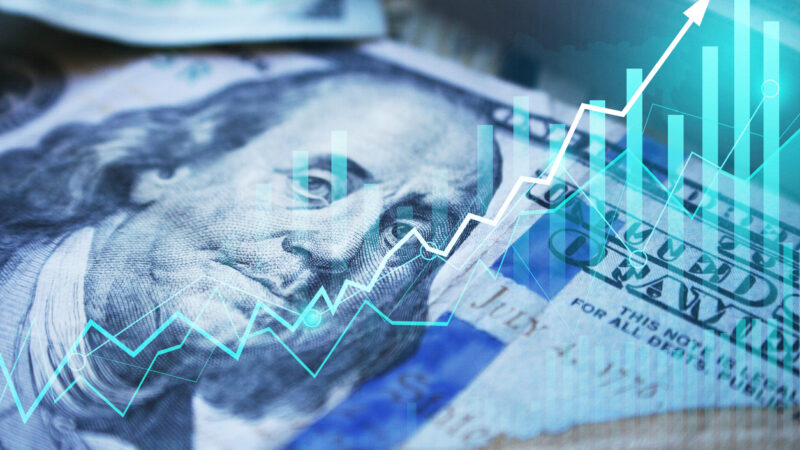O dollar showed a firm drop this Thursday, 2nd, in the domestic exchange market and returned to approaching the level of R$ 5.10 at closing. Wednesday’s signal from the president of the Federal Reserve (Fed, the US central bank), Jerome Powell, that there will be no interest rate hike in the United States continued to reverberate this Thursday, leading to further weakening of the US currency abroad and the decline in Treasury rates.



The real, which tends to suffer more in episodes of risk aversion, was the one that benefited most from the recovery of investor appetite for emerging currencies, especially Latin American ones. As the local market was closed on Wednesday, due to the Labor Day holiday, the Brazilian currency this Thursday reflected the events in the external environment on Wednesday.
The change in Brazil’s rating perspective, from “stable” to “positive”, by the risk rating agency Moody’s also played in favor of the real. According to operators, this set of information opened space for a stronger correction movement in the currency, since the dollar exchange rate closed on Tuesday, 30th, up 1.51%, close to R$ 5.20 and with an appreciation of 3.53% in April.
Down since opening, the dollar in cash it broke the R$5.15 floor in the first half hour of trading and touched the R$5.10 level at the end of the morning. In the afternoon, the currency appeared to operate below R$5.10, registering a minimum of R$5.1004, amid the deepening fall in Treasury rates. At the end of the day, the dollar fell 1.53%, quoted at R$5.1128 – the lowest value since April 11th.


Dollar “today corrects some of the excessive pessimism of recent times”
For the partner and Investment Director of Azimut Brasil Wealth Management, Leonardo Monoli, the foreign exchange market “today corrects some of the excessive pessimism of recent times”, caused by doubts about the level of interest rates in the USA throughout this year, due to the difficult conversion of inflation to targets. “As the bar for new interest rate hikes there has become higher and there is still some interest rate differential in favor of the real, the market can breathe,” says Monoli.
As expected, on Wednesday, the Fed announced maintaining the base rate in the range between 5.25% and 5.50%. The novelty was the reduction in the monthly rate of reduction of the American Central Bank’s balance sheet, from US$60 billion to US$25 billion as of June – which, in practice, means removing less liquidity from the system.
At a press conference, Powell said that an interest rate hike in the US is “unlikely”, a hypothesis that had been gaining ground in recent weeks amid surprises about the strength of the American economy and fears of stagnation in the disinflation process. To combat still high inflation, said the BC president, interest rates can be maintained at current levels “for longer”.
On Friday, the monthly employment report (payroll) in the USA for April will be released, which could lead to changes in agents’ projections for the American basic rate at the end of the year.
The investment director at Azimut Brasil highlights that Powell “has not clearly signaled that rate cuts are likely this year” nor has he stated that interest rates “are at their peak”, as he has said on other occasions. “In any case, as was clear from Powell’s speech, they are far from a reading of more symmetric risks for inflation, so the bar for new highs is really high,” says Monoli.
Abroad, the DXY index – which measures the dollar performance in relation to a basket of six strong currencies – it operated in a steady decline and renewed its low in the afternoon, at 105,299 points. Highlight is the yen’s gains of more than 1%, which has been recovering since last week, amid rumors of the government’s attempt to support the currency. According to Monoli, data from the Bank of Japan (BoJ) suggests that there was another intervention, of approximately 3.5 trillion yen, the equivalent of US$22.5 billion.
For Banco Pine’s chief economist, Cristiano Oliveira, the solidity of external accounts and the lower political risk contributed to the change in the perspective of the Brazilian credit rating by Moody’s. “We maintain the estimate of appreciation of the real in the coming months due to the robustness of external accounts and lower sovereign risk”, says Oliveira, who predicts the exchange rate at R$4.85 at the end of the year.
In the afternoon, the BC announced that the exchange flow in April (until the 26th) is negative at US$ 741 million, with an outflow of US$ 10.635 billion through the financial channel overlapping the net inflow of US$ 9.893 billion via foreign trade. During the year, the total flow of dollar it is still positive at US$4.021 billion.
With Estadão Content










